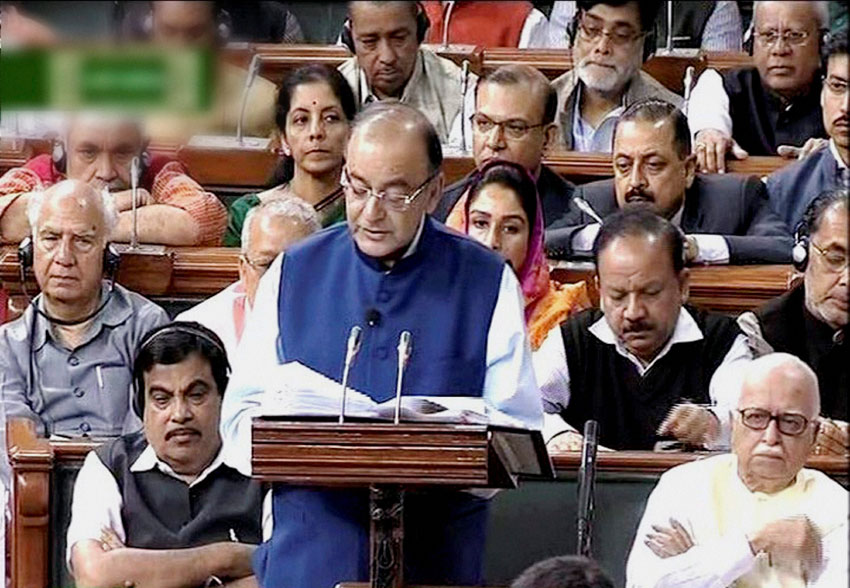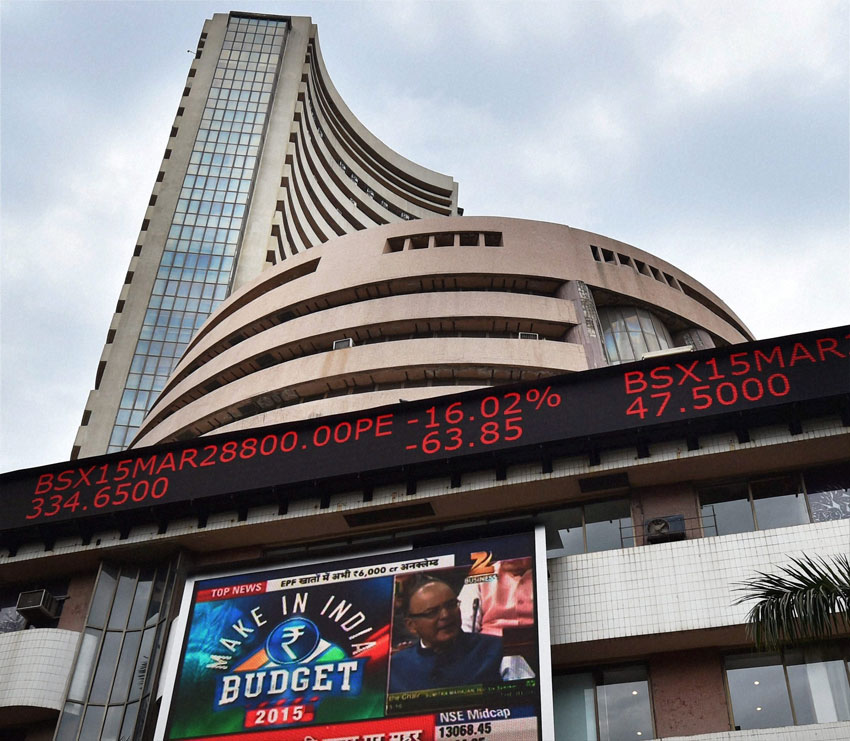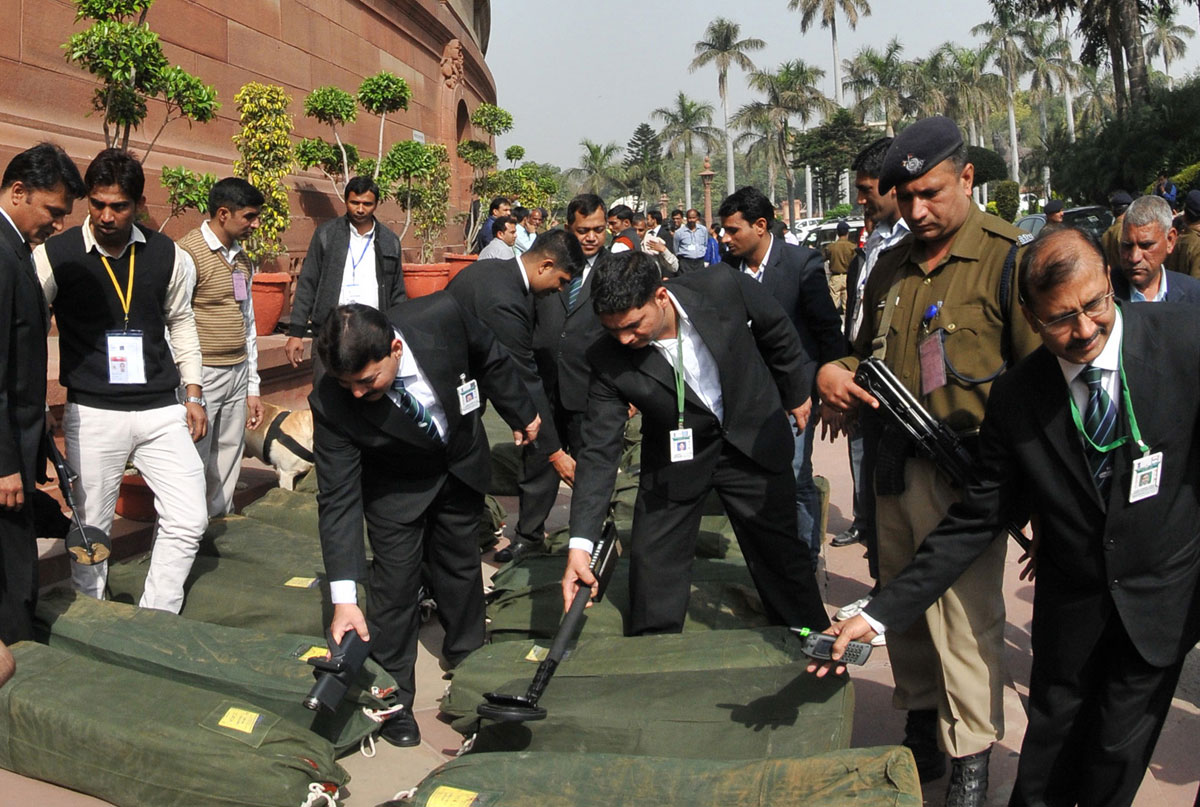PROMISE POWER TO PEOPLE
The General Budget 2015-16 documents brought in the Parliament House premises under security, in New Delhi, Feb. 28. (Press Information Bureau)
The annual budget presented by Indian Finance Minister Arun Jaitley has been hailed as pro-growth due to wider fiscal deficit projections and a government focused on making it easier to do business especially for foreign investors, among other things, writes Siddharth Srivastava.
There is focus on preparation of pre-existing regulatory mechanism to do away with red tape, reduction in corporate tax and speedy resolution of disputes that particularly impacts foreign investors.
“People who urge us to undertake big bang reforms also say the Indian economy is a super giant that moves slowly but surely. Even our worst critics would say we have moved rapidly,” Jaitley said in his budget speech. One standout feature has been more power to the people given Modi’s promise to deliver 24/7 electricity to the whole country.
Coal Power
Referring to the ongoing sale of coalmines Jaitley said auctions were one of the top three achievements of the Modi government since it assumed power in May. “Reverse auction process will ensure cheaper electricity to common man as against the practice of certain states, including New Delhi as the latest instance, extending power subsidy that is not sustainable,” Jaitley said. The government has already garnered over Rs. 2 trillion by auctioning just 33 blocks, surpassing the Rs. 1.8 trillion loss estimated earlier by the Comptroller & Auditor General due to government nomination of mines without auction.
The coal block auctions have been necessitated due to cancelation of 204 coal blocks by the Supreme Court back in September 2014. Jaitley also announced five more mega power projects (UMPPs) of 4,000 MW capacity each, are planned to be set up in the country. The minister underlined the bidding process for new UMPPs will be transparent.
“Five more UMPPs, under the plug and play model will be set up with total investments of Rs. one trillion. Under the plug and play system coal blocks will be auctioned after they are granted various clearances to speed up and simplify mining and get better valuation,” Jaitley said.
New Delhi has set up an expert panel to suggest clear bidding norms for UMPPs. Currently, two coal-based UMPPs are operational in India: the Mundra UMPP of Tata Power in Gujarat and Sasan UMPP operated by Reliance Power in Madhya Pradesh. So far, four UMPPs have been awarded by the government. The other two at Krishnapatnam (Andhra Pradesh) and Tilaiya (Jharkhand) have been bagged by Reliance Power.
The idea behind UMPPs is to create large power generation capacities at single location. A total of 16 UMPP’s were planned by the previous Manmohan Singh government. However, progress has been weighed down by ecological concerns, local resistance, land acquisition issues, bureaucratic red tape and concerns about adequate coal supply.

Renewable Energy
Jaitley announced an ambitious renewable power production target of 175,000 MW in the next seven years. Out of the total, solar power will have biggest share of 100,000 MW followed by 60,000 MW from wind energy, 10,000 MW biomass and 5,000 MW of small hydro projects. Currently, India’s clean energy capacity stands 33 GW, with 22 GW wind, 3 GW solar and rest small hydro and biomass. “As environmental degradation hurts the poor more than others, we are committed to make our development process as green as possible,” Jaitley said.
The budget envisages important role of solar in rural electrification by providing off-grid solar power generation in 20,000 villages. Reiterating government’s commitment, the Economic Survey for 2014-2015 released a day before the Budget says the National Solar Mission is being scaled up five-fold to 100,000 MW by 2022. “In the next five years proposals are likely to generate business opportunities of $160 billion in the renewable energy sector,” the survey says.
The renewable energy industry has been particularly buoyed by budget proposals to create a national infrastructure investment fund and doubling of coal cess that has the potential to ease financial bottlenecks the clean energy sector faces.
“The national investment and infrastructure fund will prove to be a game-changer for the renewable energy sector. It is also good to allow foreign investments in alternative investment funds,” Vineet Mittal, managing director of Welspun Energy said in comments to financial daily The Economic Times.

“Increasing coal cess to Rs. 200 a ton from Rs. 100 will help in sustaining subsidies to clean energy projects,” Mittal added. India introduced the clean energy cess on coal in 2010. The total collection under the National Clean Energy Fund (NCEF) has crossed Rs. 170 billion. Till September 2014, 46 clean energy projects worth Rs. 165 billion stand approved for NCEF funding.
Clearly, the Modi government has laid out an intensive agenda to rid India of its power woes. It remains to be seen whether the grand plans are pushed to fruition. The indicators are positive so far.


